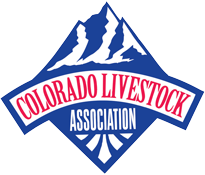Hours of Service (HOS) and Electronic Logging Devices (ELDs)
CLA has been engaged on the issue of the Federal Motor Carriers Safety Administration’s (FMCSA) Hours of Service regulation for livestock haulers. Livestock haulers need the flexibility within Hours of Service to protect the animals in their care. The Hours of Service regulation limits the maximum driving hours for property-carrying drivers and also limits the total consecutive on-duty hours for those drivers.
Overview
The U.S. livestock industry is made up of a diverse and complex supply chain all across the country. Livestock are primarily transported by truck and may travel great distances. Transporting livestock in a manner that is humane, safe, and efficient is a top priority for our producers and the livestock haulers who transport live animals each day.
History
On July 6, 2012, President Obama signed the Commercial Motor Vehicle Safety Enhancement Act into law, which required the Department of Transportation (DOT) to create and enforce an electronic logging device (ELD) rule. DOT published a final rule regarding the electronic logbooks that became effective February 16, 2016, stating that all motor carriers and drivers who are currently required to keep records of duty status (RODS) on paper must install and use an ELD no later than December 18, 2017. Since 2018, through the yearly congressional appropriations process, livestock organizations have worked with Congress to secure an exemption from the ELDs for livestock haulers.
In addition to ELD regulations, existing hours-of-service (HOS) regulations pose significant consequences for the livestock industry. Current federal law limits on-duty time to 14 hours, with a maximum drive time of 11 consecutive hours. The driver must then rest for 10 consecutive hours before returning to duty. Unfortunately, this is simply not enough drive time to accommodate the realities of hauling live animals across the country. Research also demonstrates that repeated loading and unloading of animals creates stress, potentially endangering livestock and the livestock hauler.
Livestock groups, the National Cattlemen's Beef Association, the National Pork Producers Council and the American Farm Bureau, and others are working hard to ensure federal regulations covering livestock transportation are flexible enough to allow our drivers to do their jobs safely while also maintaining general road safety as well as the safety of the livestock they are hauling. Flexibility is critical to maintaining an efficient, reliable supply chain and keeping grocery store shelves stocked.
We will continue working with Congress to exempt livestock haulers from ELD regulations. The most recent exemption provided by Congress lasts until September 30, 2023. Livestock organizations were successful in securing an exemption from the HOS regulations that allows anyone hauling agricultural commodities to be exempt from HOS rules until they are outside of the 150-air mile radius (172 road miles) of their starting point for the day. In addition, the Infrastructure Investment and Jobs Act of 2021, included an additional 150 air-mile exemption on the backend of livestock hauls to provide further flexibility during the unloading period. National agricultural groups were instrumental in securing both exemptions.
Why does this matter for livestock producers?
If livestock producers no longer have an exemption from the ELD regulations, and existing HOS rules become more restrictive, this may force some producers and small business owners out of the marketplace, it may have the unintended consequence of decreasing driver safety, and it may jeopardize the well-being of animals if they can no longer be hauled by trained, skilled drivers.
